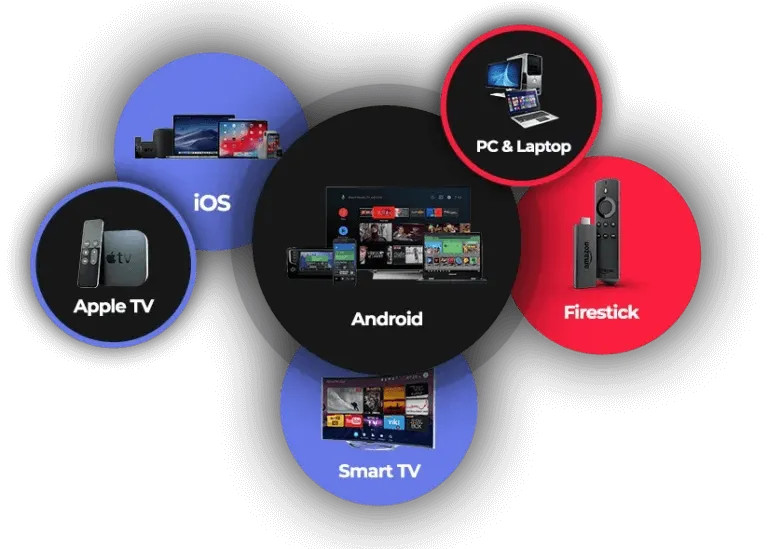Enhance Your Watching Experience: IPTV Subscription with Extensive Networks
Enhance Your Watching Experience: IPTV Subscription with Extensive Networks
Blog Article
Exactly How IPTV Works: A Step-by-Step Overview to Internet Method Tv Modern Technology
Net Method Television (IPTV) has actually transformed the means we take in television content, providing a brand-new world of opportunities via the power of the web. Recognizing the ins and outs of exactly how IPTV works can clarify the modern technology that drives this cutting-edge kind of media distribution. From the basic principles of IPTV to the intricate process of content delivery, each action plays an essential function in making sure a seamless viewing experience. In this overview, we will discover the underlying systems that make IPTV an interesting fusion of modern technology and home entertainment.
IPTV Fundamentals
In understanding IPTV fundamentals, it is essential to grasp the fundamental workings of this technology in supplying tv content online. IPTV, which stands for Internet Method Television, makes use of Internet Method (IP) networks to send television web content to individuals' devices. Unlike standard methods of broadcasting tv content with cable television or satellite signals, IPTV streams media with high-speed net connections.

Moreover, IPTV allows for interactive capabilities, such as video on need (VOD) and electronic program overviews (EPG), enhancing the user experience by giving more control and versatility in accessing content. In general, recognizing the essentials of IPTV establishes the structure for discovering its more advanced functionalities and the benefits it uses to contemporary television intake.
Material Delivery Refine
Effective material delivery in IPTV systems includes a well-structured process that makes sure smooth transmission of tv web content over IP networks. The material distribution procedure in IPTV begins with the production of the video clip content, which is then inscribed into digital layout appropriate for IP transmission.

Middleware Capability
With the integration of middleware, IPTV systems gain boosted capability that simplifies individual communication and web content monitoring. Middleware functions as an essential element that connects the void between the user interface and the back-end framework, facilitating smooth communication and communication within the IPTV system. Among the vital functions of middleware in IPTV is to make it go right here possible for tailored customer experiences by supplying functions such as interactive program overviews, video-on-demand solutions, interactive marketing, and customer preferences management. By systematizing these capabilities via middleware, provider can offer an extra dynamic and customized IPTV experience to their subscribers.

Gadget Compatibility
Given the critical function of middleware in making it possible for smooth communication and content administration in IPTV systems, a vital element to consider is the compatibility of devices utilized for accessing the IPTV solutions. Device compatibility is essential for making sure a smooth user experience and optimal efficiency when accessing IPTV content.
In the context of IPTV, device compatibility describes the ability of a gadget to properly engage with the IPTV solution, display content correctly, and support the needed procedures and codecs for streaming video material over the web. Various devices, such as clever TVs, set-top boxes, smartphones, tablet computers, and computers, might have varying levels of compatibility with IPTV services.
To make certain a seamless watching experience, it is essential for individuals to select tools that are suitable with the details IPTV service additional hints they are making use of. In addition, IPTV company should provide assistance for a wide variety of gadgets to provide to the varied needs of their individual base. By focusing on device compatibility, both customers and company can boost the overall IPTV experience.
High Quality of Solution (QoS)
Considering the crucial function of preserving a high requirement of efficiency and reliability in IPTV systems, making certain regular Quality of Service (QoS) stays a fundamental element of the user experience. QoS in IPTV refers to the ability of the system to provide material with marginal disruptions, high resolution, and quickly packing times. To achieve optimal QoS, numerous factors require to be resolved. Network transmission capacity is crucial to sustain premium video clip streaming without buffering or pixelation. Additionally, latency, jitter, and packet loss need to be reduced to enhance the watching experience.
Solution providers utilize QoS mechanisms such as website traffic prioritization, buffering, and error improvement to keep a steady IPTV service. By focusing on IPTV web traffic over much less click this site time-sensitive data, suppliers can make certain smooth playback also during peak use hours. Buffering helps make up for network variations, while error adjustment methods improve data stability.
Continual monitoring and optimization of QoS criteria are vital to adjust to changing network conditions and customer demands. Inevitably, a durable QoS framework is essential for delivering a smooth and pleasurable IPTV experience to customers.
Verdict
To conclude, IPTV operates through the transmission of television web content over web protocol networks. The technology includes a methodical process of web content distribution, promoted by middleware functionality to guarantee compatibility throughout different gadgets. Quality of Service plays an essential function in maintaining the performance and dependability of IPTV solutions. Understanding the essential concepts of IPTV is essential for grasping the intricacies of this cutting-edge tv innovation.
Report this page